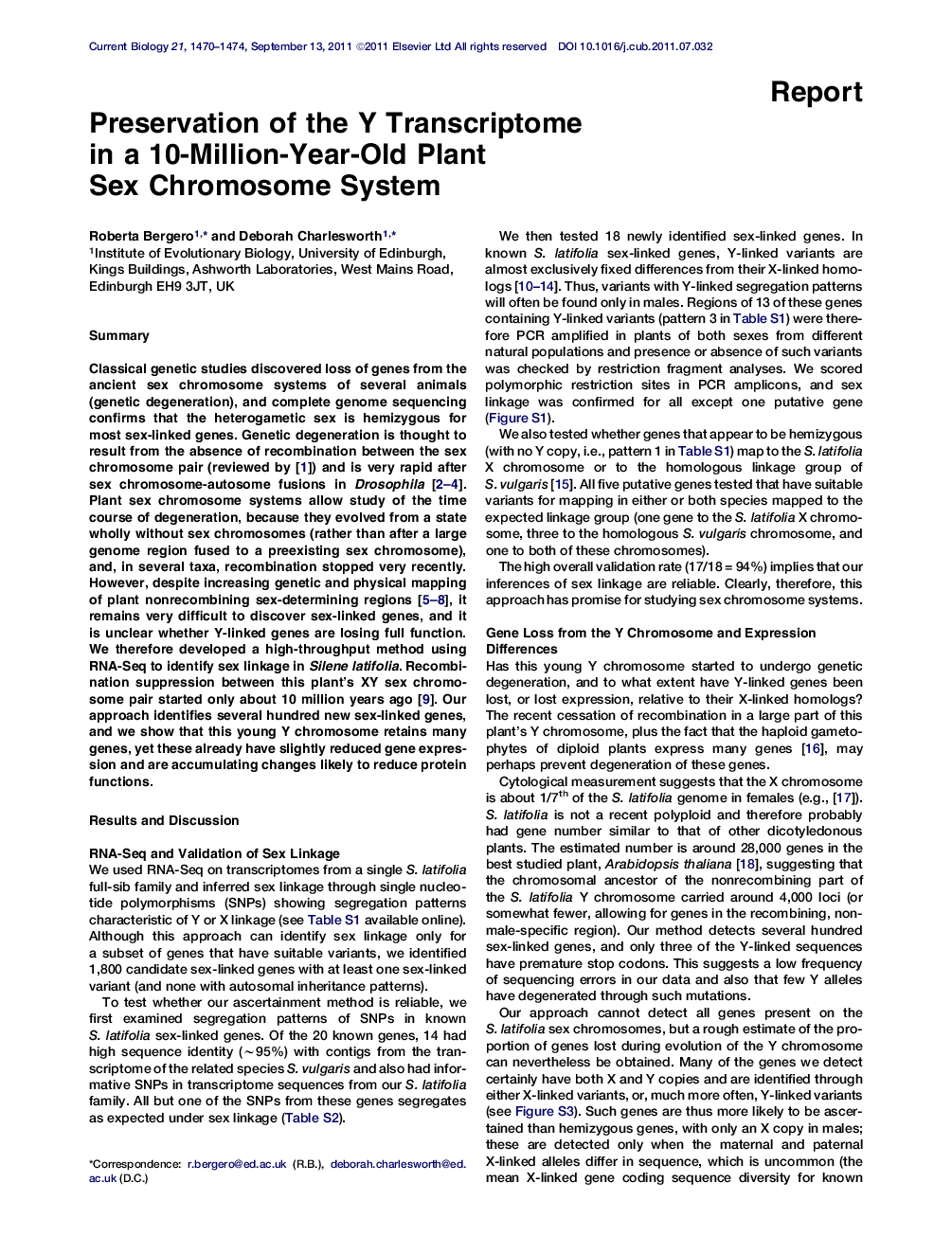| Article ID | Journal | Published Year | Pages | File Type |
|---|---|---|---|---|
| 2043117 | Current Biology | 2011 | 5 Pages |
SummaryClassical genetic studies discovered loss of genes from the ancient sex chromosome systems of several animals (genetic degeneration), and complete genome sequencing confirms that the heterogametic sex is hemizygous for most sex-linked genes. Genetic degeneration is thought to result from the absence of recombination between the sex chromosome pair (reviewed by [1]) and is very rapid after sex chromosome-autosome fusions in Drosophila [ 2, 3 and 4]. Plant sex chromosome systems allow study of the time course of degeneration, because they evolved from a state wholly without sex chromosomes (rather than after a large genome region fused to a preexisting sex chromosome), and, in several taxa, recombination stopped very recently. However, despite increasing genetic and physical mapping of plant nonrecombining sex-determining regions [ 5, 6, 7 and 8], it remains very difficult to discover sex-linked genes, and it is unclear whether Y-linked genes are losing full function. We therefore developed a high-throughput method using RNA-Seq to identify sex linkage in Silene latifolia. Recombination suppression between this plant's XY sex chromosome pair started only about 10 million years ago [ 9]. Our approach identifies several hundred new sex-linked genes, and we show that this young Y chromosome retains many genes, yet these already have slightly reduced gene expression and are accumulating changes likely to reduce protein functions.
► We describe a new method to find genes with sex-linked inheritance patterns ► This Y chromosome retains many genes, with gene loss estimated to be lower than 20% ► We detect an excess of nonsynonymous substitutions in the Y-linked coding sequences ► The estimated expression of Y-linked alleles is ∼15% lower than X-linked ones
